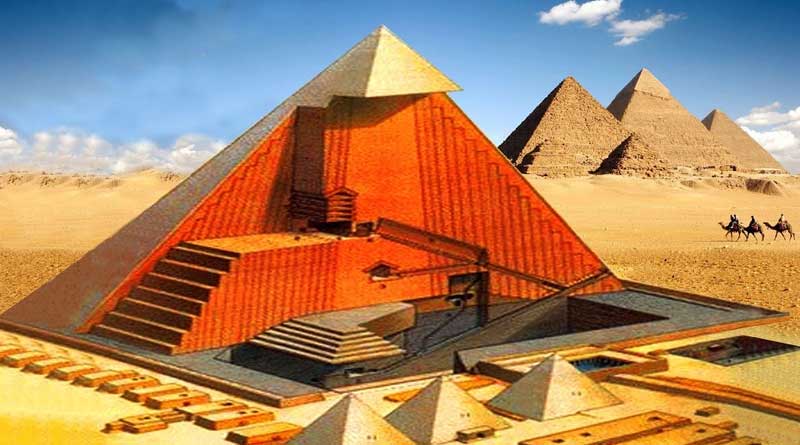Unsolved Enigmas: 3 Ancient Egyptian Pyramid Mysteries Baffling Archaeologists
The global fascination with ancient Egypt spans centuries; Greek rulers portrayed themselves as pharaohs, and Romans adorned their cities with Egyptian obelisks. Napoleon’s 1798 invasion fueled Egyptomania, drawing amateur archaeologists to unearth temples, statues, and the famed tomb of Tutankhamun. Despite Europe’s fervor, the pyramids stand unrivaled in grandeur.
Built from 2600 BCE to 1550 BCE as funerary tombs for pharaohs, over 100 pyramids dot Egypt’s landscape, showcasing power and wealth. From Djoser’s stepped pyramid to the unique Bent Pyramid and the iconic Pyramids of Giza, these monuments symbolize ascension to the afterlife. Ongoing research since the 19th century has unveiled mysteries, with early archaeologists clearing sand and later experts scanning and restoring. Despite centuries of exploration, many pyramid secrets endure.
#1 The Enigma Unveiled: Decoding the Construction of Egypt’s Pyramids
The Pyramid of Khufu, Egypt’s largest, comprises 2.3 million stone blocks, some weighing 2.5 to 16 tons. The mystery deepens considering the lack of simple machines like the wheel in ancient Egypt. Theories on block transportation involve sleds and wet sand, with evidence suggesting that water increased sand stiffness, reducing friction for easier movement. Once on-site, a quarry ramp hints at block extraction, but the method to lift them onto the pyramid remains elusive. The ramp’s form—spiraling, straight, or within the pyramid—and block-moving techniques, from sleds to rollers, remain unknown, adding to the age-old enigma of ancient monumental constructions worldwide.
#2 Unlocking Secrets: Delving into the Enigmatic Chambers of Khufu’s Pyramid
In 2017, a groundbreaking revelation unfolded within the Pyramid of Khufu, courtesy of ScanPyramids. Utilizing muon-tomography—a cosmic-ray-based, non-invasive scanning method revealing 3D images—researchers unveiled two previously undiscovered voids, marking the first such findings since the 19th century.
A smaller void, approximately 15 feet in length, surfaced on the north face, suggesting a potential passageway with a horizontal and upward slope. More notably, a 100-foot void emerged above the Grand Gallery, an impressive passageway leading to the pyramid’s central burial chambers.
Details about the larger chamber remain elusive, its orientation and potential subdivision into smaller rooms uncertain. While not likely a burial chamber, it could be a counterpart to the Grand Gallery or hold insights into the pyramid’s construction. A similar chamber exists in the Bent Pyramid, constructed by Khufu’s father, Snefru, to alleviate the weight of overlying masonry.
ScanPyramids aims to extend its scanning endeavors to other pyramids, including the Pyramid of Khafre, Egypt’s second-largest. The mysteries held within ancient Egypt’s monuments, unearthed by muon-tomography, remain a captivating journey into the past, with more revelations awaiting discovery.
#3 The Riddle Deepens: Unraveling the Mystery Behind the Ceased Pyramid Construction
Around 1500 BCE, the era of royal pyramid construction ceased. Pharaohs, once entombed within pyramids, found their final resting places in the Valley of Kings, near Thebes, the new capital of ancient Egypt. The reasons behind this shift remain elusive, though various theories abound.
One theory suggests religious changes emphasizing subterranean tombs around 1500 BCE. The rocky, rugged landscape of Thebes contrasted sharply with the open spaces of the previous capital, Memphis, making massive pyramids impractical.
Tomb robbing posed a continuous threat, prompting the preference for inconspicuous burials. The Valley of the Kings, with its cliffy terrain, provided a hidden locale for royal tombs. Pharaoh Tuthmosis, the first interred there, kept the burial’s secrecy, employing guards against looters.
A more recent theory, from engineer Peter James, links the halt in pyramid construction to the extreme temperature fluctuations in the Egyptian desert. Examining the Bent Pyramid, built in 2600 BCE, he discovered that temperature variations caused limestone expansion and contraction, leading blocks to detach. Interestingly, the Bent Pyramid’s unique construction preserved it, as gaps allowed for thermal expansion. In contrast, the tightly aligned blocks of the Pyramids of Giza led to rapid casing disintegration. Witnessing the visible and swift degradation of these once-perfect monuments may have contributed to pharaohs abandoning pyramids as burial sites after investing substantial time, money, and effort in their creation.

